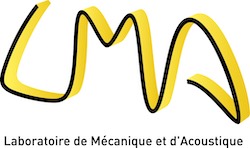Diffraction (or scattering) problems consist in studying the wave field resulting from an incident wave on an obstacle. In general, these are complicated time-dependent problems, but often a hypothesis of time harmonicity can be made, allowing one to work in the frequency domain. The resulting equation is the well-known Helmholtz equation. Such problems have applications in acoustic (scalar problem) and electromagnetic (EM, vectorial problem) waves, but also in elasticity and quantum mechanics (though I don’t know much about this last point !).
In this talk, I will try to give a short historical perspective of the field and I will also review briefly various techniques that have been successful at solving important canonical problems. A problem is canonical if the obstacle considered is simple, but has particular characteristics such as sharp edges or corners. An ideal solution to such a problem is an analytical expression for the total field. However, it is often difficult to obtain, and a scattering problem is considered solved if we can write down its far-field behaviour analytically, or evaluate it very quickly on a computer. This is often reduced to the evaluation of the so-called diffraction coeffcient. Although the geometry considered are simple, knowledge of the diffraction problems can be used to evaluate (for example numerically) the scattered field resulting from more complicated geometries subject to high-frequency incident waves.
I will then focus on one particular canonical problem, the three-dimensional problem of diffraction by a quarter-plane, which can be linked to many physical applications and is also one of the last “mathematically open’” problems in the field. Some progress towards a solution have been made in the last few years allowing to understand this problem a bit better, however, as we will see, there is still some work to be done, and new theories should probably be developed to solve it completely.


